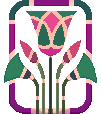
Saturday, May 16, 2015 A
Sunlight on a Statue and More Research
8:10 am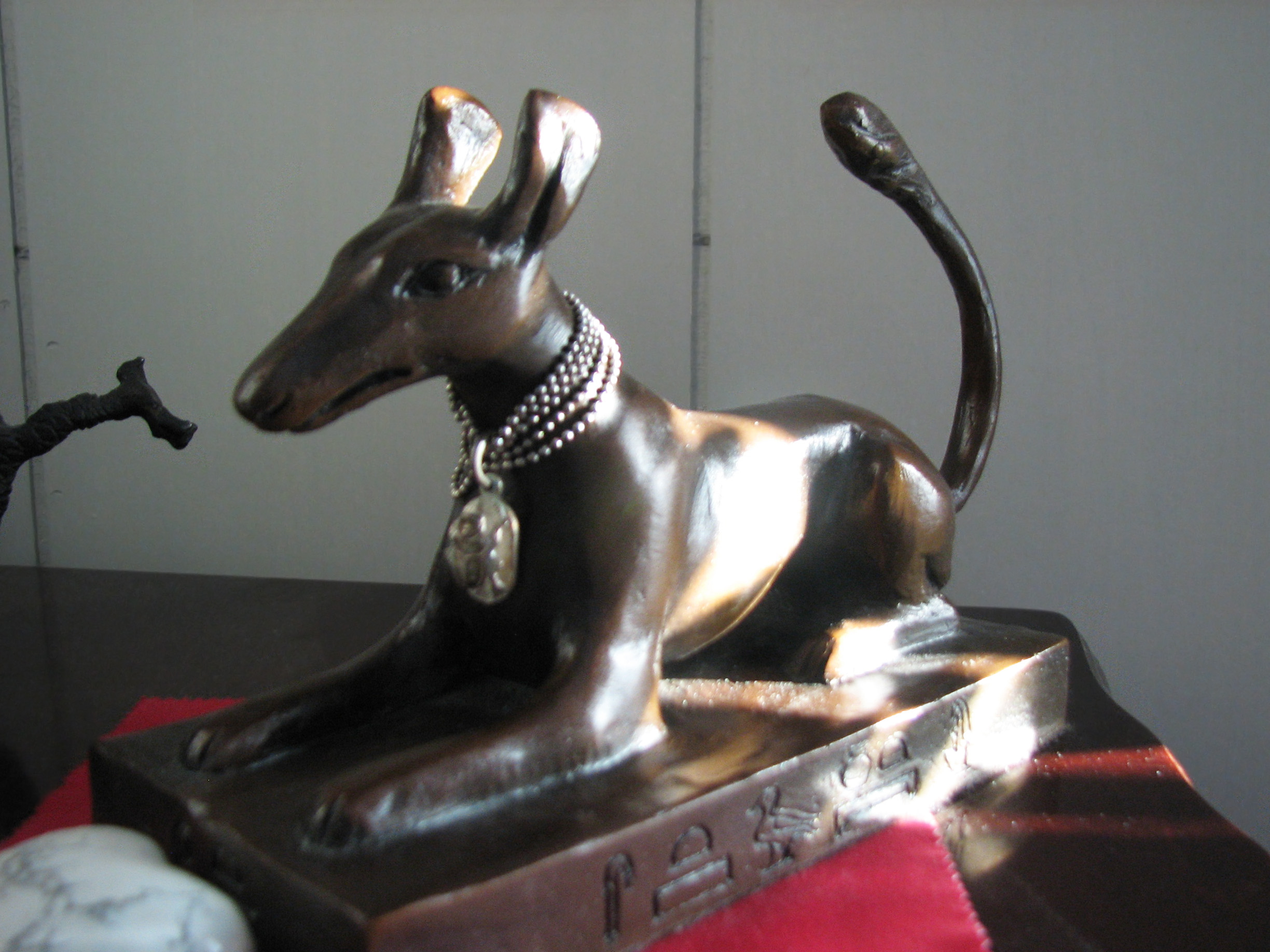
When I saw the sunlight 'kissing' the ears on my statue of Set, I had to capture it!
I've found earlier evidences of Hathor. Djedkare Isesi of the Fifth Dynasty has a scene in his mortuary complex in which he is receiving life from Hathor in the presence of Wadjet and Horus and Set:
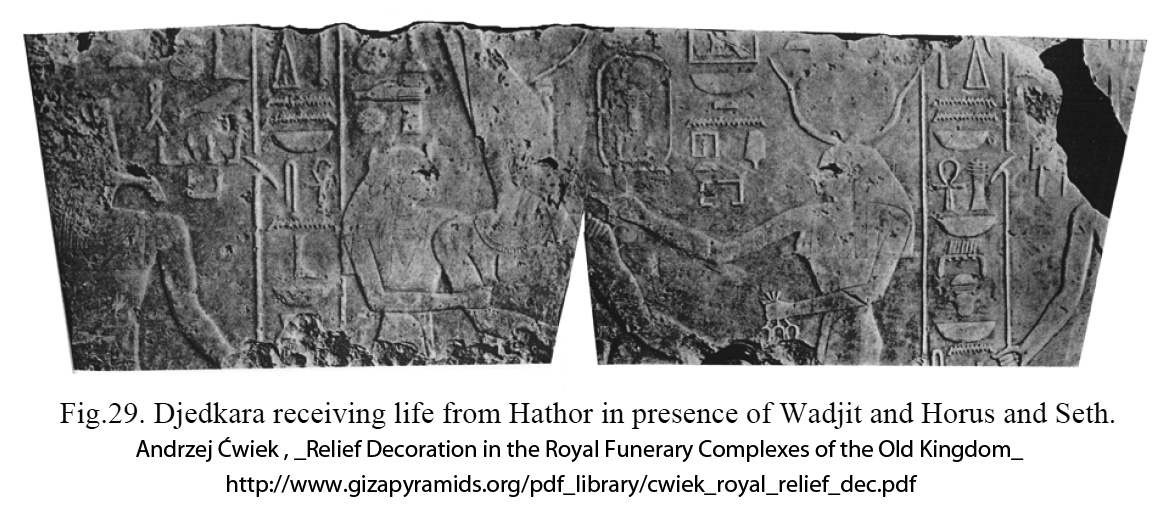
Andrzej Ćwiek, in _Relief Decoration in the Royal Funerary Complexes of the Old Kingdom_
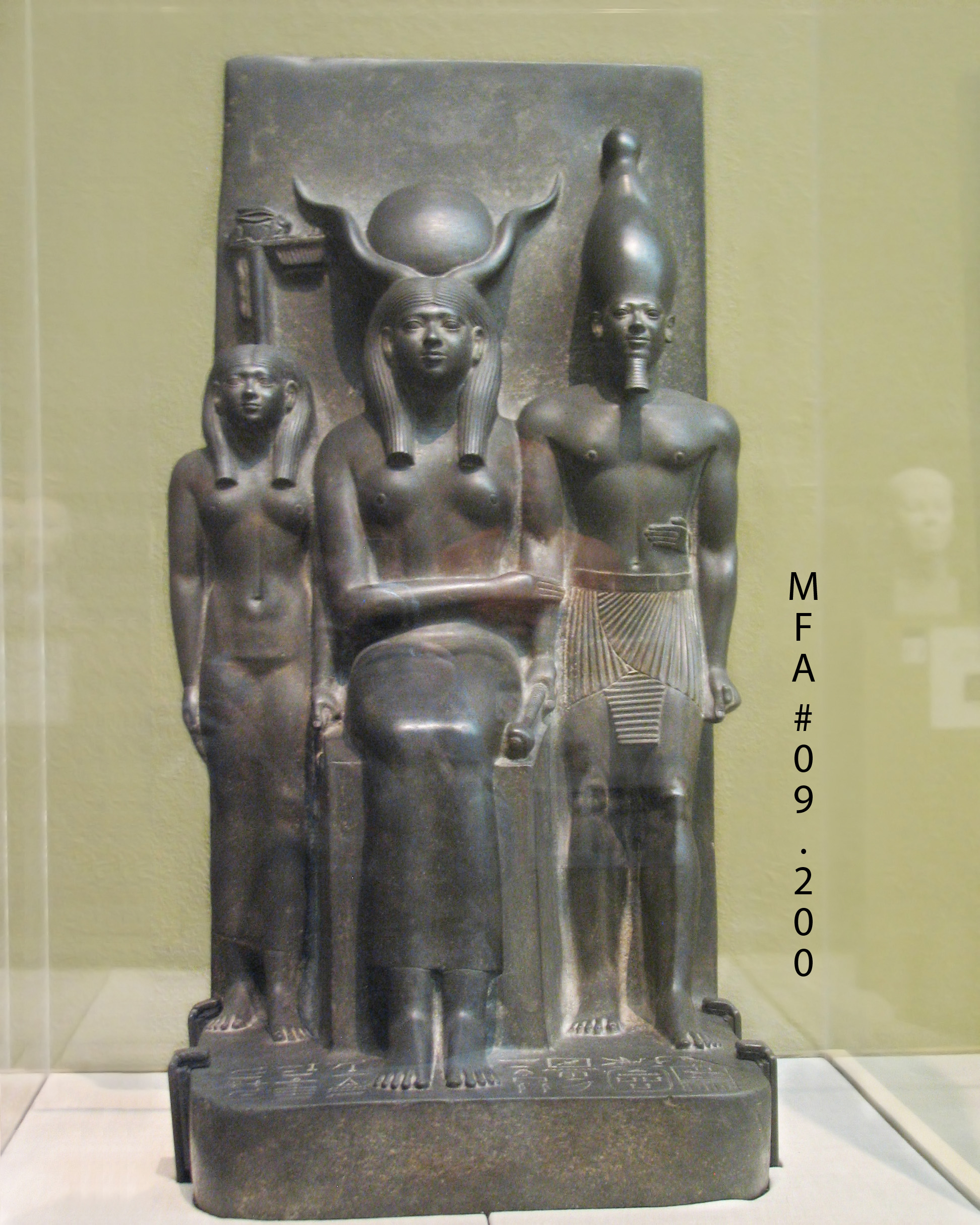 Menkaura with Hathor and Hare Nome Deity From Giza, Valley Temple of Menkaure, 2490–2472 B.C.E. Greywacke, W x H x D: 43.5 x 84.5 x 49 cm, (17 1/8 x 33 1/4 x 19 5/16 in.), Weight; 187.8 kg (414.02 lb.) "More than half a dozen triads were discovered in the ruins of Menkaure's (Mycerinus') Valley Temple. They depict the king, the goddess Hathor (with sun disk and cow's horns), and a minor nome, or province, deity." "Size corresponds to hierarchical position in Egyptian art, and while visually Hathor and Menkaura appear to be the same height, the seated goddess is significantly larger in scale." (From info card and website) Museum Expedition, MFA #09.200 Photo ©Joan Ann Lansberry, 2014
|
I also got the idea to go poking in the Lepsius archives and found slightly earlier Fourth Dynasty evidence of Hathor mentions:

From the Giza graves, in the reign of Khafre
Second column: Hathor, Lady of the Sycamore, Lady of Dendera
Khafre's mortuary temple gives further evidence as it is "the best-preserved building of the Fourth Dynasty [and] is a square building with two entrances that bear the only inscriptions in the entire temple; all that can still be deciphered of them today are the words: "Khafre Beloved of [the goddess] Bastet" and "Khafre Beloved of [the goddess] Hathor". (David P. Silverman, _Ancient Egypt_, (Oxford University Press 1997, 2003 edition), page 185)
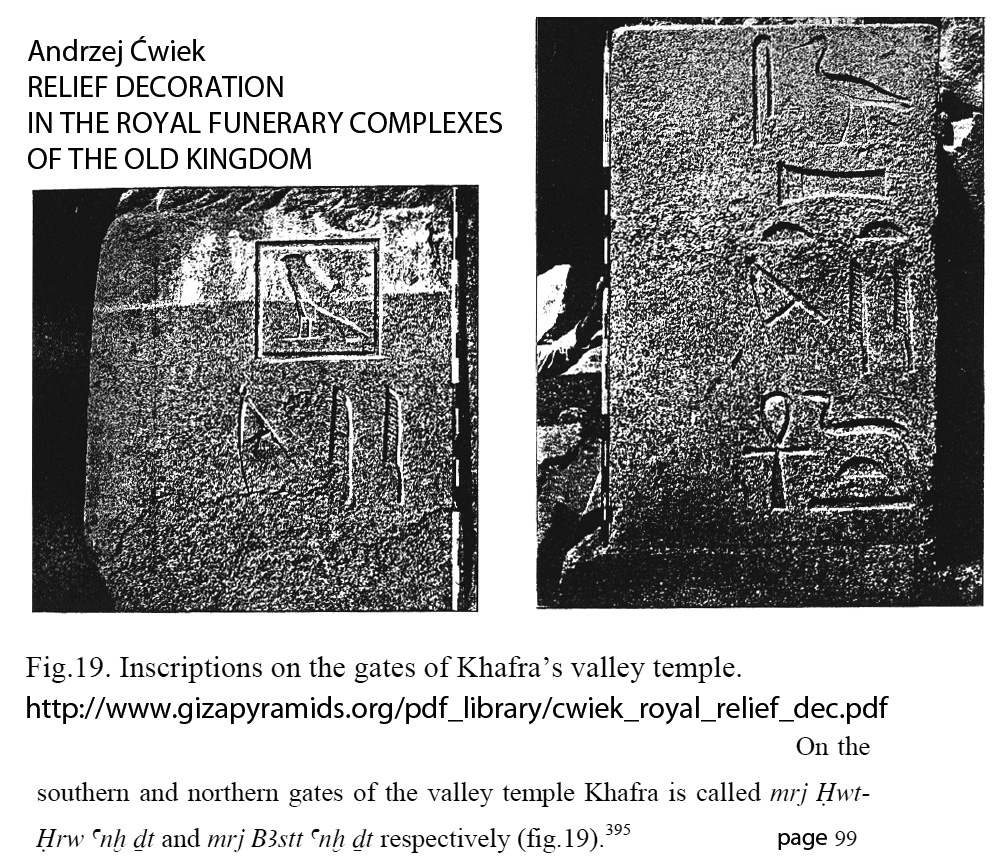
Andrzej Ćwiek, in _Relief Decoration in the Royal Funerary Complexes of the Old Kingdom_, gives pictorial evidence of this inscription
And there's even earlier evidence: "The presence of Hathor is suggested through the existence of priests and priestesses of Hathor, at least as early as Khufu's reign." "Textual evidence confirmed that Khufu's upper temple had five statue niches, four niches for the four names of Khufu, and one niche for a statue of Hathor. Each of these statues was served by a priest." (_Ancient Egyptian Kingship_, edited by David Bourke O'Connor, David P. Silverman, (Brill, Leiden, 1995) page 223)

Saturday, May 16, 2015 B
More Pepi and Hathor
7:40 pm
In footnote 1267 he adds:
"In the scholarly analyses the primitive role of
Hathor as a sky-goddess and female counterpart of the sun god has sometimes been much
shadowed by her later features as a goddess of love, music etc. This led to underestimation
of the evidence, clearly noticed e.g. in the translation of the Pyramid Texts by Faulkner
who regularly renders ‘Mansion of Horus’ instead of ‘Hathor’ and ‘Lady of On’ instead of
‘Lady of Dendera’ (Pyr.§ 207; cf. his remarks in Pyramid Texts, p.51)."
Footnote 1269: "1269 Pyr.§ 1111: ‘My mother Bastet has nursed me...’; Pyr.§ 466: ‘are you the god, the eldest one, the son of Hathor?’. Pepy I stressed the filiation from Hathor (as well as from Atum) in a special manner in his titulary (e.g. a door-jamb from Tanis: Petrie, Tanis I, p.6, pl.I no.2; two blocks from Tell Basta: Naville, Bubastis, p.6, pl.XXXII)."
As I shared before:
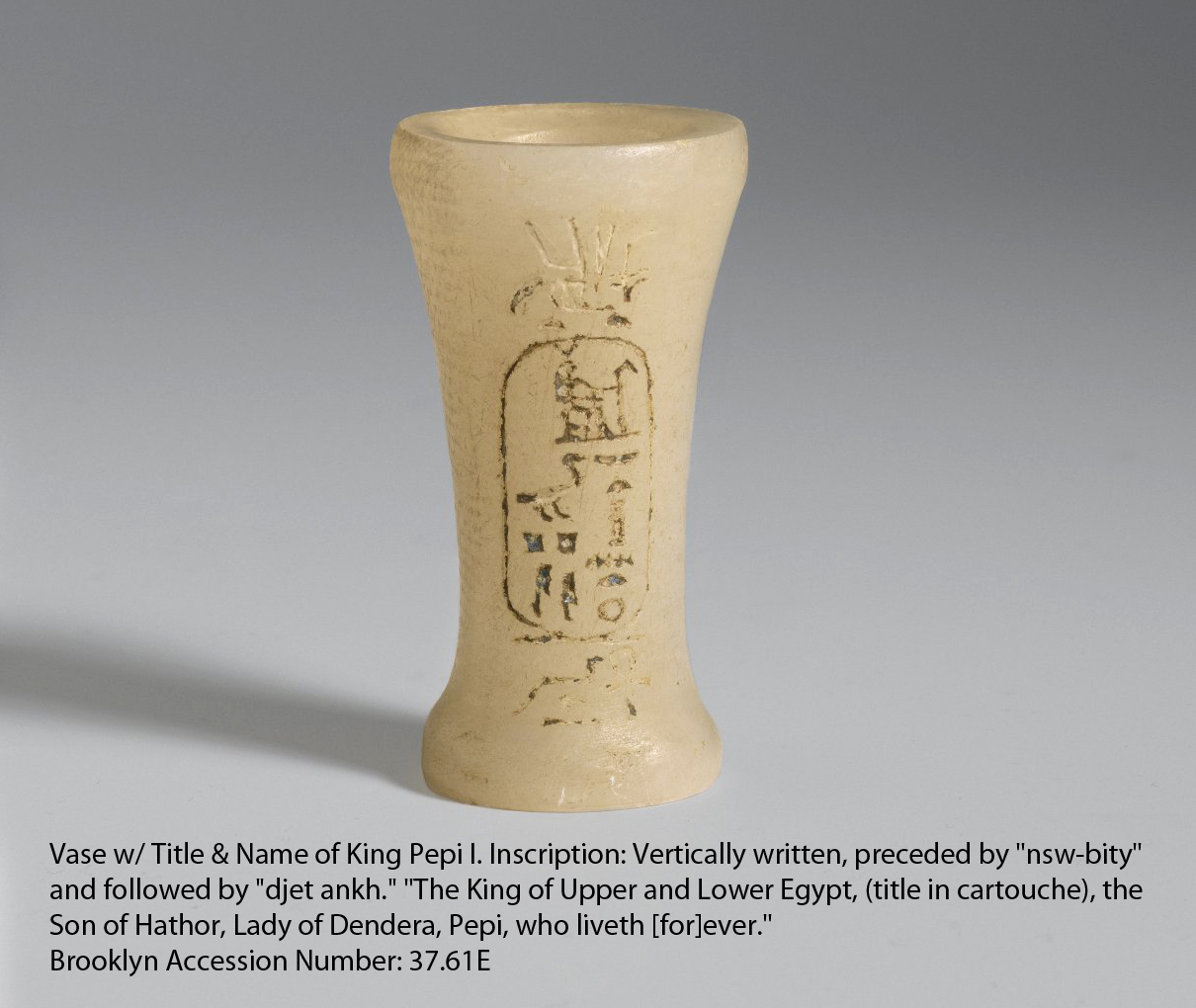 Vase of Pepy I Egyptian alabaster, traces of fruit Reportedly From: Saqqara, Egypt Old Kingdom, VI Dynasty. ca. 2338-2298 B.C.E. Dimensions: 2 1/8 x diam. 1 1/8 in. (5.4 x 2.8 cm) Accession Number: 37.61E Credit Line: Charles Edwin Wilbour Fund, (adapted from museum website photo) "Catalogue Description: Vase Bearing Title and Name of King Pepi I. Inscription: Vertically written, preceded by "nsw-bity" and followed by "djet ankh." "The King of Upper and Lower Egypt, (title in cartouche), the Son of Hathor, Lady of Dendera, Pepi, who liveth [for]ever."
|
And here are the Tanis and Bubastis pieces:

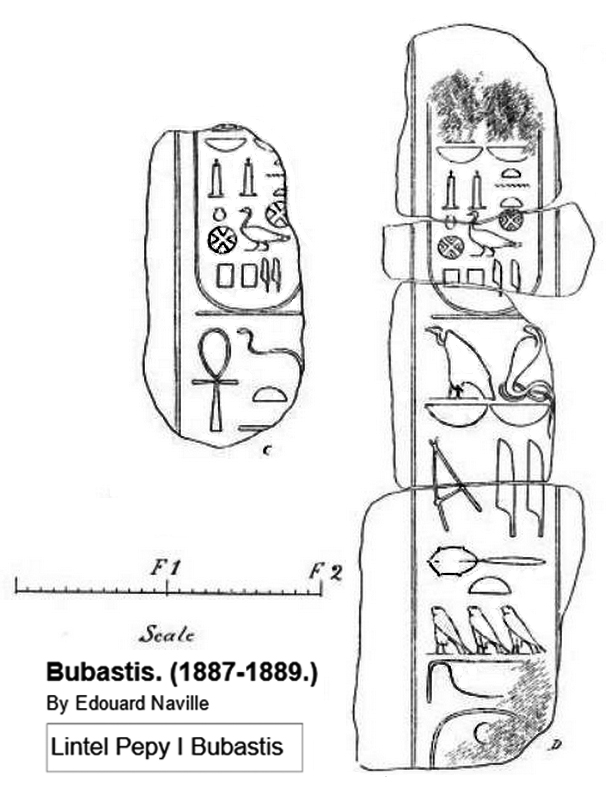
Hathor and Bast appeared "together on a lintel from the
house of ka of Pepi I at Bubastis (fig.88).1270"
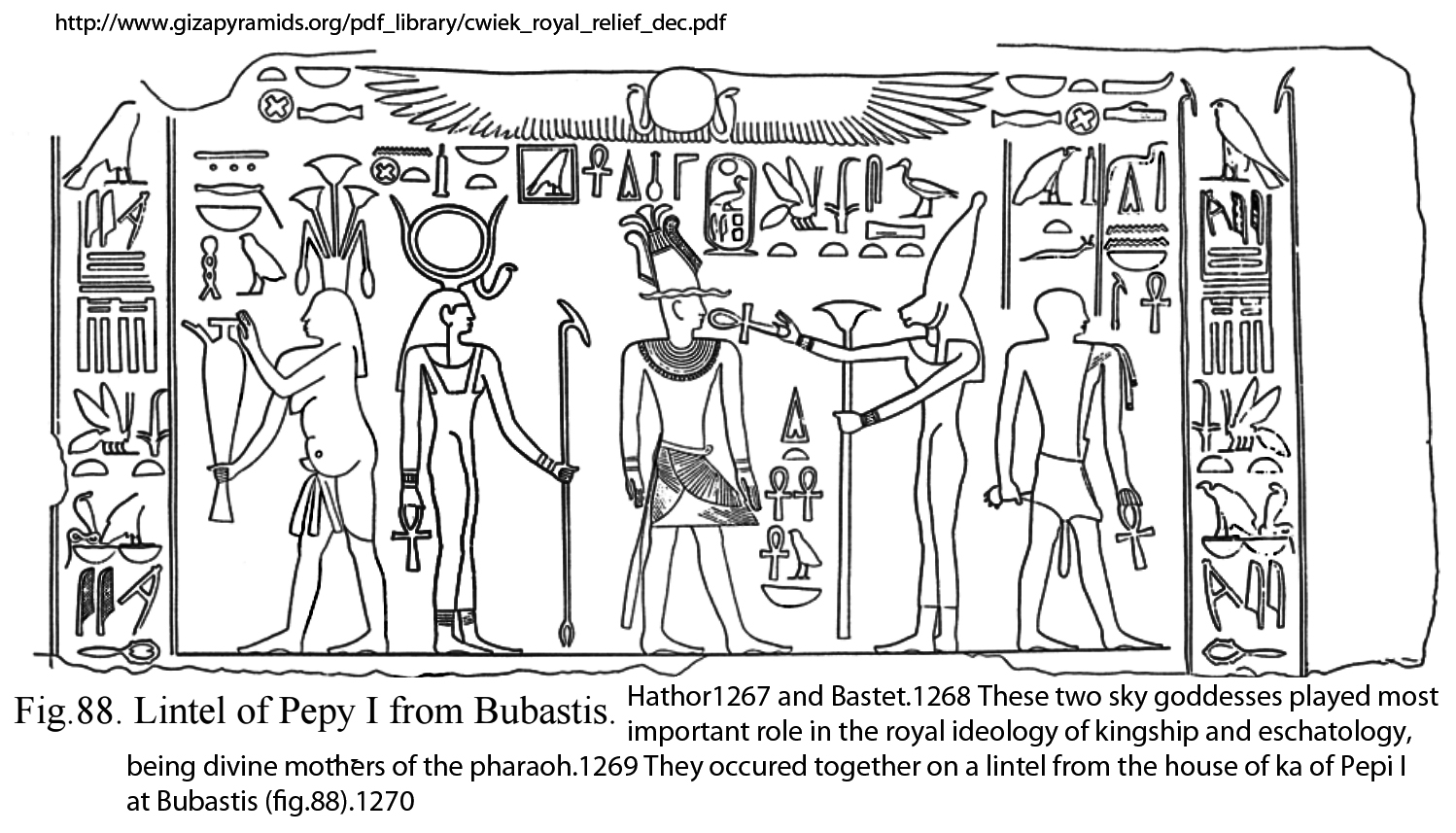
"1270 Habachi, Tell Basta, pp.8, 14-18, fig.2, pl.2; Fischer, Dendera, p.40, fig.8. The lintel is
now in Cairo (JE 72133)."
Texts from the Pyramid Age, edited by Ronald J. Leprohon, provides a translation:
Text of Pepy I from Tell Basta (ancient Bubastis)
A. Entrance Lintel with Scene of Pepy I Receiving an Ankh (Life) Sign from Bastet
Either side of winged sun-disc at top: He of Behdet, lord of Mesen.
Lion-headed goddess: Bastet. Giving all life.
King: The king of Upper and Lower Egypt, the son of Re, Pepy, the perfect god, given life.
Figure of goddess: Hathor, mistress of Iunet (Dendera).
Priest at right: To you have I given life and dominion. The Iunmutef priest ("pillar of his mother").
Above corpulent Nile god at left: (The personification of) Lower Egypt, master of provisions.
Either end of scene: Horus Merytawy, the king of Upper and Lower Egypt, the Two Ladies Merykhet...
(_Texts from the Pyramid Age_, (Copyright 2005, Society of Biblical Literature (Brill Academic Publishers), page 92)
